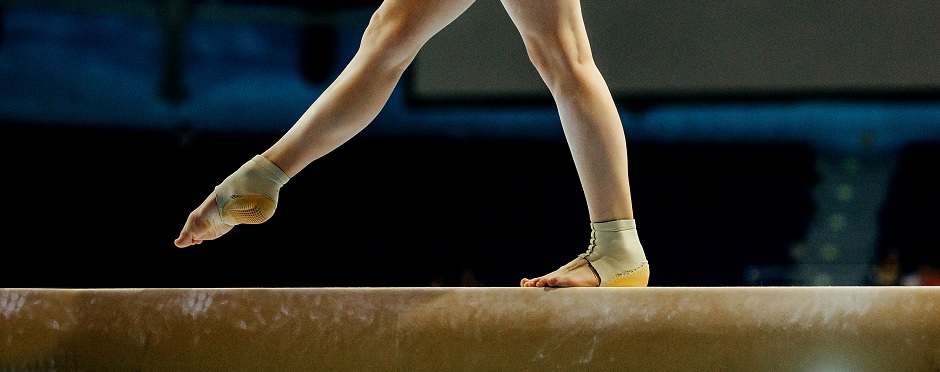
4 Foot Strengthening Exercises for Gymnasts
1 CommentFoot injuries can occur when playing sports but a shoe or cleat can often protect the foot from injury. Some sports, like gymnastics, are performed barefoot. Gymnasts have extra demands placed on the small muscles of the foot as they are not getting the support of a shoe. When training barefoot, there is an increased demand of the muscles in the foot and lower leg. These muscles will help to stabilize the foot and ankle which may reduce the risk of ankle sprains or injuries higher up the leg such as in the knee or hip. How can gymnasts help prevent injury when training barefoot? Here are some ways gymnasts can strengthen their foot muscles to improve their performance.
1. Toe Yoga
Toe yoga helps to activate the small muscles within the foot and the toes.
- Begin in a sitting position with your foot flat on the floor.
- Try to raise the big toe while keeping the remaining toes on the ground.
- Perform 10 repetitions. Then switch and try to keep the big toe on the ground while lifting the other toes.
- Repeat 10 times. Perform on both feet.
Try to prevent the ankle and knee from rocking side to side as you lift the toes. This exercise can feel like it takes a lot of thinking as we are re-training and isolating muscles that do not get a lot of attention; take your time and keep trying. As it becomes easier, try to perform in standing or alternating between lifting big toe and small toes.
2. Single Leg Balance
Single leg balance is a huge component of strength and proprioception (sense of self-movement and body position) of the foot and ankle. Try performing balance without shoes on. Below are some variations that can increase the challenge:
- Perform with Eyes Closed
- Try balancing on one leg with your eyes closed. Try to hold this for 30 seconds and make sure to practice on both sides.
- Add leg kicks
- While standing on one leg, kick the other leg out to the side, forward, and backward within a small range. Perform 10 kicks each way and try to perform all 10 without placing your foot on the ground. Perform kicks in a slow and controlled range. You can add a resistance band for added challenge.
- Airplanes
- When standing on one foot, lean the whole body forward toward a horizontal position. You can use a target to reach forward such as your water bottle. Try to hinge from the hips rather than bending the knee or rounding the back to come forward. Return to the upright starting position and try to perform 10 repetitions without touching your foot down in between.
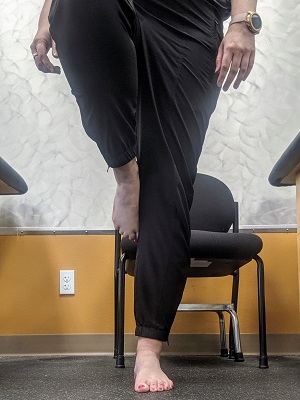
3. Toe Walking
- Walk on your toes along a straight line.
- Make sure you walk forward and backward and sideways to simulate walking on a balance beam.
This helps to gain strength and endurance for walking on the balance beam and helps with push off for floor and vault.
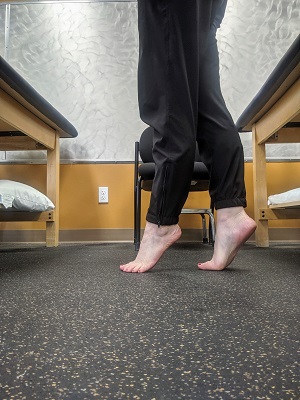
4. 4-Way ankle with Resistance Band
We want to make sure to strengthen the ankle in all four directions the ankle can move – up, down, in, and out. Resistance bands come in different levels of resistance so make sure to select the appropriate difficulty for where you are starting. It is important to perform these strengthening exercises with control instead of speed. Try to perform 20-30 reps each direction.
For an added challenge, try to perform the pushing down motion with your toes curled. This motion will have four steps 1. Curl toes into band 2. Point the whole foot and ankle down 3. Return ankle to starting position while keeping toes curled 4. Relax toes. This helps to isolate ankle and foot muscles and specifically those in the arch of your foot.
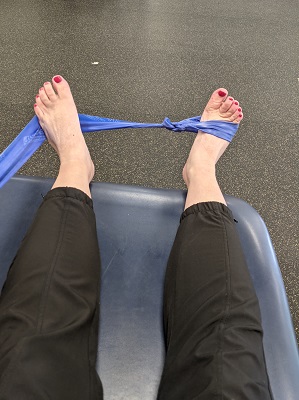
Ankle eversion – This photo shows the right foot going outside using the left foot to anchor band, holding band with your hands.
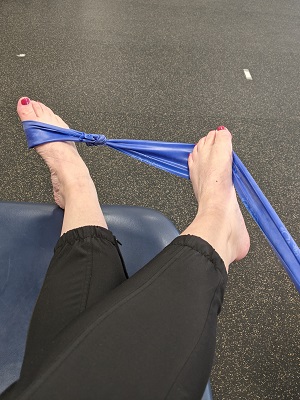
Ankle inversion – This photo shows the right foot going into middle with the left leg crossed over to help anchor band.
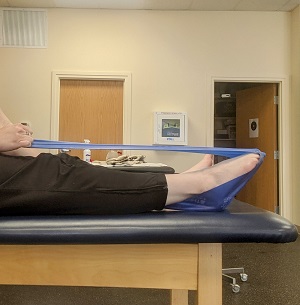
Ankle plantar flexion – This photo shows band under foot/calf with band looped upward and over foot and toes to perform pointing motion into band.
Helping Gymnasts Reach Peak Performance
Training barefoot can help all athletes but it is especially important for sports that do not wear shoes such as gymnastics. Try adding these exercises into your training routine and see if you notice a difference. If you are looking for a more individualized program for a gymnastics injury, you can find an Athletico gymnastics program member near you today.
Find a Gymnastics Therapist Near You
The Athletico blog is an educational resource written by Athletico employees. Athletico bloggers are licensed professionals who abide by the code of ethics outlined by their respective professional associations. The content published in blog posts represents the opinion of the individual author based on their expertise and experience. The content provided in this blog is for informational purposes only, does not constitute medical advice and should not be relied on for making personal health decisions.
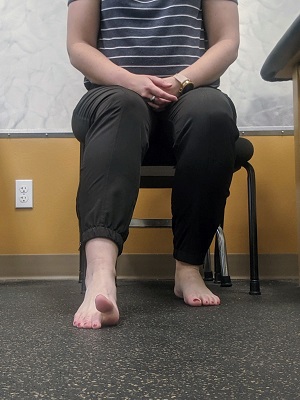
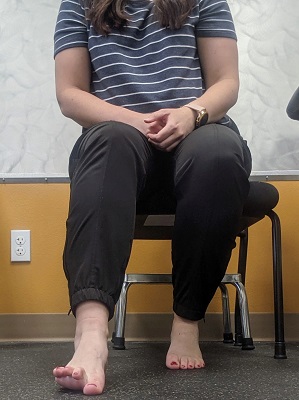

1 Comment
Jovie Murtha
Great article!